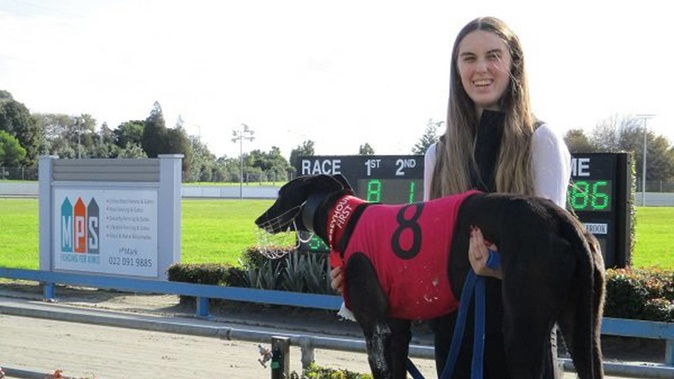

The country’s racing watchdog is urging Greyhound owners to be aware of dogs chewing or licking fresh wood staining in kennels as New Zealand notches up its first case of excessive arsenic levels in a racing dog.
Amateur Auckland greyhound trainer Chloe Watson’s dog Teeing Off returned a positive result for arsenic after it came third in race 7 at the Auckland Greyhound Meeting at Cambridge on November 28 last year.
The threshold for arsenic in a greyhound is 800ng/ml. Teeing Off had 1158ng/ml of arsenic in its system.
Arsenic is a naturally occurring trace element that is normally present in greyhounds at very low levels as a result of a normal dietary intake.
However, in its decision, the Racing Integrity Board [RIB] said an excessive amount of arsenic - a carcinogenic to humans - has been shown to have an effect on the cardiovascular system and was considered a prohibited substance.
During the 2022/23 Greyhound Racing New Zealand [GRNZ] season, there were 241 samples analysed returning an average arsenic level of 59ng/ml.
Watson, 18, pleaded guilty to a charge of not “presenting Teeing Off to race in the said race free of arsenic” and was also aware the same dog received a “high” reading, of 300ng/ml, in a race two weeks earlier.
When questioned by investigators in January, she was shocked to hear of such a high reading and the only thing she could attribute it to was the recent staining of the wooden floor in her dog kennels.
After obtaining her trainer’s licence she worked a number of jobs to buy four brand-new kennels to house her dogs.
The kennels were purchased from a reputable seller and she was unaware the timber was treated with copper chromium arsenate [CCA] which contains arsenic.
After hearing of the higher positive result, she immediately removed her greyhounds from their kennels and moved them to temporary housing to ensure the risk of exposure to further arsenic was reduced.
She had since modified the kennels by installing matting to ensure the dogs could not chew or lick the CAA-treated timber.
In its publicly released decision, the RIB said the case highlighted the possibility that kennels treated with CAA could, through licking or chewing, cause elevated arsenic levels - a link that may not be well-known in the industry.
“On that basis, there is an opportunity for GRNZ and the RIB, if it has not already occurred, to mitigate potential further breaches by alerting industry participants of the findings in this case.”
However, while it issued a warning, the results weren’t conclusive that the wood staining had caused the excessively high levels in Teeing Off.
RIB investigators had further samples analysed which returned levels of 0.260, meeting the minimum retention requirements.
The laboratory manager advised that level was “typical for H 3.2 treated timber and is not considered particularly high for this treatment type, it is lower than H4 or any other CCA treatment or hazard class”.
No other sources of arsenic were found at Watson’s Clevedon-based training facility.
“Although it is difficult to ascertain the direct cause of the high arsenic levels, it is the belief of the RIB that the most likely source of the threshold breach is from the copper chromium arsenate [CCA] treated timber located in the kennel in which Teeing Off was housed.”
The RIB took into account Watson’s remorse, youth, limited training experience, and cooperation with investigators and handed down a fine of $1000 with the ability for it to be paid in installments.
Teeing Off was also disqualified from the November 28 race, with Watson forfeiting her $290 winnings.

Take your Radio, Podcasts and Music with you









